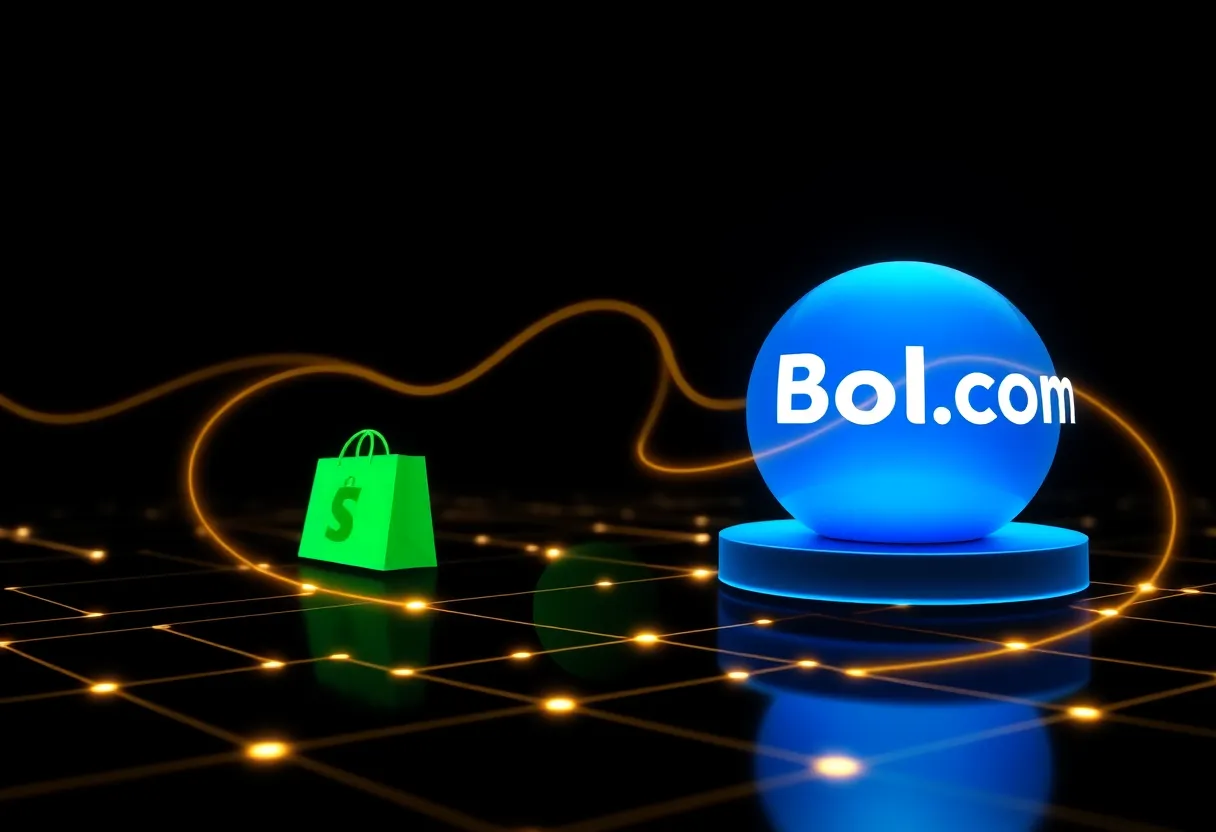Table of Contents
Shopify and Bol.com Market Landscape
Did you know that Shopify powers over 4 million online stores worldwide? This e-commerce giant has become the go-to platform for businesses of all sizes looking to sell online. Meanwhile, Bol.com dominates the Benelux region, serving as the Amazon of the Netherlands and Belgium.
Let’s break down why connecting these two powerhouses matters:
- Shopify’s global reach
- Bol.com’s local market expertise
- Potential for cross-border sales
Shopify’s user-friendly interface and robust features have made it a favorite among entrepreneurs. But to truly succeed in the Dutch and Belgian markets, tapping into Bol.com’s established customer base is crucial.
Here’s a quick look at the market share:
| Platform | Market | Active Sellers |
|---|---|---|
| Shopify | Global | 4 million+ |
| Bol.com | Benelux | 50,000+ |
Connecting Shopify with Bol.com opens up new opportunities for growth. Sellers can manage their inventory across both platforms, reaching more customers without doubling their workload.
But how do you actually link these platforms? That’s where tools like Marketplace Connect come in handy, streamlining the process of shopify koppelen bol.com.
This video shares some lesser-known Shopify tips that can boost your store’s performance, whether you’re selling on Shopify alone or expanding to Bol.com.
Understanding the e-commerce landscape in both global and local contexts is key to making informed decisions about platform integration. Let’s explore how you can effectively connect these two powerful sales channels to maximize your online presence.
Setting Up Your Shopify-Bol.com Connection
Connecting Shopify to Bol.com can seem daunting, but it’s actually pretty straightforward. The key is picking the right tool for the job. You’ll want something that handles both platforms smoothly and keeps everything in sync.
Once you’ve chosen your integration app, it’s time to get things set up. Here are the main steps:
- Install the app on your Shopify store
- Link your Bol.com account through the app
- Configure your settings for inventory and order sync
- Test the connection to make sure everything’s working
Most apps will walk you through this process. If you hit any snags, don’t worry. Good integration tools offer support to help you troubleshoot.
While setting up your connection, it’s a good time to think about your overall marketing strategy. This video offers some great tips for promoting your Shopify store that could apply to your Bol.com presence too.
Optimizing Inventory Management
Once you’re connected, keeping your inventory straight across both platforms is crucial. Nobody wants to sell something they don’t have in stock. Here’s how to keep things running smoothly:
- Set up real-time inventory updates
- Use buffer stock to prevent overselling
- Automate your inventory feeds
- Regularly review and adjust your stock levels
Real-time updates are a game-changer. They ensure that when you sell an item on Shopify, your Bol.com stock adjusts automatically, and vice versa. This prevents those awkward “sorry, we’re out of stock” emails to customers.
Buffer stock is your safety net. It’s a small amount of inventory you keep in reserve to cover any discrepancies or sudden spikes in sales. Most good integration tools let you set this up easily.
Streamlining Order Fulfillment
Managing orders from multiple channels can get messy fast. The trick is to centralize everything. Here’s a comparison of manual vs. automated order processing:
| Task | Manual Process | Automated Process |
|---|---|---|
| Order Sync | Check multiple platforms daily | Real-time sync to one dashboard |
| Status Updates | Update each platform separately | Automatic updates across all channels |
| Shipping | Enter tracking info manually | Auto-populate tracking details |
Automating these processes saves a ton of time and reduces errors. It’s worth looking into tools that can handle this for you. For instance, our Marketplace Connect app does all this and more, starting at just $19.99 a month.
When it comes to shipping and returns, consistency is key. Set up clear policies that work for both Shopify and Bol.com. This makes life easier for you and your customers.
By streamlining these processes, you’ll free up time to focus on growing your business instead of getting bogged down in day-to-day operations. And that’s what it’s all about – scaling efficiently without losing your mind in the process.
For more tips on expanding your reach through Shopify and Bol.com integration, check out this helpful guide. It dives deeper into strategies for leveraging both platforms effectively.
Remember, the goal is to make selling on multiple channels as simple as possible. With the right tools and strategies, you can manage your Shopify and Bol.com presence without breaking a sweat. And if you’re looking for a solution that ties it all together, why not give Marketplace Connect a try? It might just be the time-saver you’ve been looking for.
Maximizing Your Multi-Channel Strategy
Connecting Shopify with Bol.com opens up a world of opportunities for e-commerce businesses. Let’s dive into how this integration can supercharge your multi-channel approach.
First, let’s look at the power of data across platforms:
- Unified customer insights
- Trend spotting across marketplaces
- Inventory optimization
- Pricing strategy refinement
By leveraging data from both Shopify and Bol.com, you gain a 360-degree view of your business. This holistic perspective allows for smarter decision-making and targeted growth strategies.
Automated workflows are the secret sauce to scaling operations. Here’s how they can help:
- Streamlined order processing
- Real-time inventory updates
- Synchronized product information
- Effortless returns management
These automations free up valuable time, allowing you to focus on strategic tasks rather than getting bogged down in day-to-day operations. Tools like Marketplace Connect can handle these tasks seamlessly, ensuring your Shopify and Bol.com stores stay in perfect sync.
Enhancing customer experience across channels is crucial for long-term success. Consider these factors:
- Consistent branding and messaging
- Unified customer support
- Seamless cross-channel promotions
By providing a cohesive experience, you build trust and loyalty, encouraging customers to shop with you regardless of the platform they’re on.
Optimizing your Shopify-Bol.com connection isn’t just about technology – it’s about strategy. To truly excel, consider implementing best practices for Bol marketplace sellers. This approach, combined with a robust integration, sets the stage for sustainable growth and success in the competitive e-commerce landscape.
Wrap-up
Connecting Shopify with Bol.com opens up a world of possibilities for Dutch e-commerce sellers. By streamlining your operations across these platforms, you can reach more customers and boost sales without doubling your workload. The key is finding the right tools to make this integration smooth and hassle-free.
Remember, successful multi-channel selling isn’t just about being present on multiple platforms. It’s about managing them efficiently. This means keeping your inventory in sync, handling orders from one central place, and making sure your product info is up-to-date everywhere.
As you explore your options, consider solutions that offer real-time syncing and automated updates. Our Marketplace Connect app, for instance, handles these tasks so you can focus on growing your business. It’s designed to work seamlessly with Shopify and Bol.com, among other marketplaces.
Ready to take your e-commerce game to the next level? Start by evaluating your current setup and identifying where you need the most help. Then, look for tools that address those specific needs. With the right strategy and support, you’ll be well on your way to mastering multi-channel selling.
Still have questions about connecting Shopify with Bol.com? Check out our FAQ section below for more insights.
Common Questions About Shopify-Bol.com Integration
How much does it cost to integrate Shopify with Bol.com?
The cost varies depending on the integration method you choose. Some apps like Marketplace Connect start at $19.99 per month and offer a free trial. The return on investment often outweighs the cost by streamlining operations and expanding your reach.
What are the technical requirements for connecting Shopify to Bol.com?
You’ll need an active Shopify store and a Bol.com seller account. Most integration tools are cloud-based, so no special software installation is required. A stable internet connection and up-to-date browser are essential for smooth operation.
How long does the integration process typically take?
With user-friendly tools like Marketplace Connect, the basic setup can be completed in a few hours. However, fine-tuning settings and ensuring all products are correctly mapped may take a few days, depending on your catalog size and complexity.
What are some common issues when integrating Shopify with Bol.com?
Common challenges include:
- Product data mismatches between platforms
- Inventory sync delays
- Order processing errors
Most of these can be resolved by double-checking your settings and ensuring your product data is consistent across both platforms. Tools like Marketplace Connect often provide troubleshooting guides and support to help address these issues.
Can I manage multiple sales channels, including Bol.com, from my Shopify dashboard?
Yes, with the right integration tool, you can manage orders, inventory, and listings for multiple channels, including Bol.com, directly from your Shopify admin. This centralized management saves time and reduces errors. Our Marketplace Connect app, for example, allows you to handle multiple marketplaces from one interface.
How does integrating Shopify with Bol.com affect my inventory management?
Integration typically enables real-time inventory syncing between Shopify and Bol.com. This means when an item sells on either platform, the stock level is automatically updated across both channels, helping prevent overselling and improving inventory accuracy.





